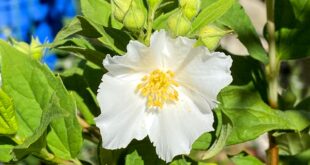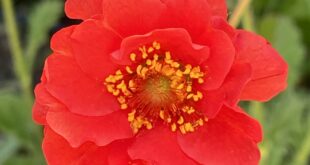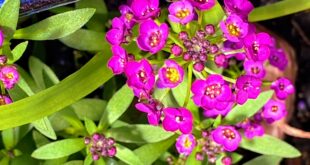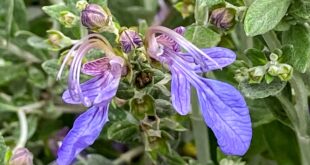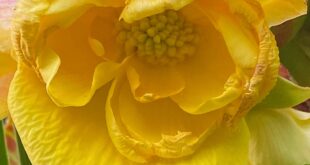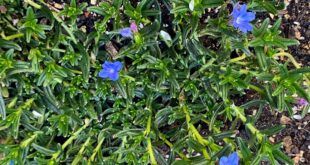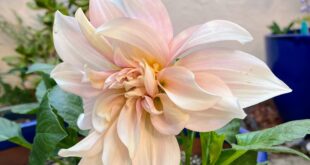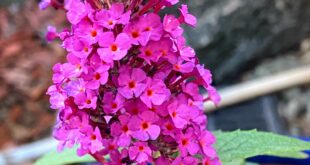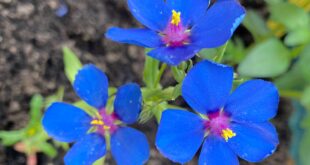Consult any book on heirloom garden plants and you will certainly find Philadelphus listed prominently. They are a group of plants that exude old-fashioned charm. This hybrid of uncertain parentage from the 1900’s fills the garden mid-Spring through mid-Summer with an alluring and far-carrying scent of BUBBLEGUM! Much less cloying, in my opinion, than the citrusy smell of its cousins. …
Read More »Tag Archives: perennial
Geum ‘Blazing Sunset’
Welcome, garden enthusiasts! Today, we’re diving into the world of vibrant perennials to spotlight a true showstopper in the garden: the Geum ‘Blazing Sunset’. This fiery beauty is a must-have for any gardener looking to add a splash of color and a touch of drama to their outdoor space. A Burst of Scarlet Brilliance The Geum ‘Blazing Sunset’ is renowned …
Read More »Sweet Alyssum
The Sweet Scent of Success: Growing Sweet Alyssum in Your Garden Gardening enthusiasts often seek flowers that are not only visually appealing but also easy to grow and beneficial for the environment. Sweet alyssum, with its delicate blooms and honey-like fragrance, ticks all these boxes. In this blog post, we’ll explore the charm of sweet alyssum and how you can …
Read More »Teucrium fruticans azureum
Teucrium fruticans azureum (Bush Germander) is a reliable foliage and flowering accent plant. It develops into a large evergreen shrub, 4-8 ft. high, spreading 8-10 ft. across. Distinctive foliage is gray-green above with silvery white hairs beneath. Colorful pale lavender flowers are heaviest in winter to early spring and intermittently throughout the year. Bush germander comes from rocky slopes in …
Read More »Salvia microphylla ‘Dazzler’
Dazzler is a compact new hybrid with deep intense rose red flowers, glossy, bluish foliage, dark stems and sepals and long bloom season. The plant has a compact and bushy habit, with a height and spread of 24-36 inches. It produces showy flowers in shades of purple-red that bloom from spring to late fall or early winter. The flowers are …
Read More »Begonia ‘Picotee Sunburst’
Begonia ‘Picotee Sunburst’ is a begonia of classic elegance. It is a summer flower with large, rich blossoms that are a definite showstopper. The blooms are a bright yellow with crimson-red tips, and can be up to 6 inches across. The petals are delicately pleated and stand out against the foliage of deep green leaves. The plant is a semi-ruffled …
Read More »Lithodora diffusa ‘Grace Ward’
Gentian blue flowers are the calling card for this vigorous, sun-loving ground cover. Plants first form a 3-6” high mat of soft, dark-green foliage and then come late spring, a parade of intense, dark blue, 1/2” star-shaped flowers. Each of the 5 petals has a darker rib, accentuating its starburst shape. When smothered in flowers, there’s no blue-flowering ground cover …
Read More »Dahlia ‘Cafe au Lait’
Dinnerplate dahlias are near the top of the WOW! flowers list and this lovely Cafe au Lait is no exception. Showcasing eye-catching, huge flowers (10” wide) and dense with petals (formal decorative form), these flowers range in color from pale peach to a creamy beige. Whiter towards the outsides, the color intensifies towards the center. An imposing specimen, this dahlia …
Read More »Buddleja davidii ‘Hot Raspberry
This latest in the Buzz series of compact butterfly bushes features vivid fuchsia-pink flowers on 10” long arching cones. Blooming from early summer to late fall, the sweetly scented flowers are a magnet for bees, butterflies & hummingbirds. Once established, plants are covered in vibrant swathes of hot raspberry flowers. This award winner is definitely meant to be a focal …
Read More »Anagallis monellii “Blue Pimpernel”
Anagallis monelli, commonly called blue pimpernel, is a low-growing tender perennial of the primrose family that grows to 6-10” (less frequently to 18”) tall and spreads to 20” wide. Saucer-shaped, deep gentian blue flowers (to 3/4” diameter) bloom non-stop from early summer to frost on sprawling stems clad with lance-shaped to elliptic, medium green leaves (to 1” long). Each flower …
Read More »